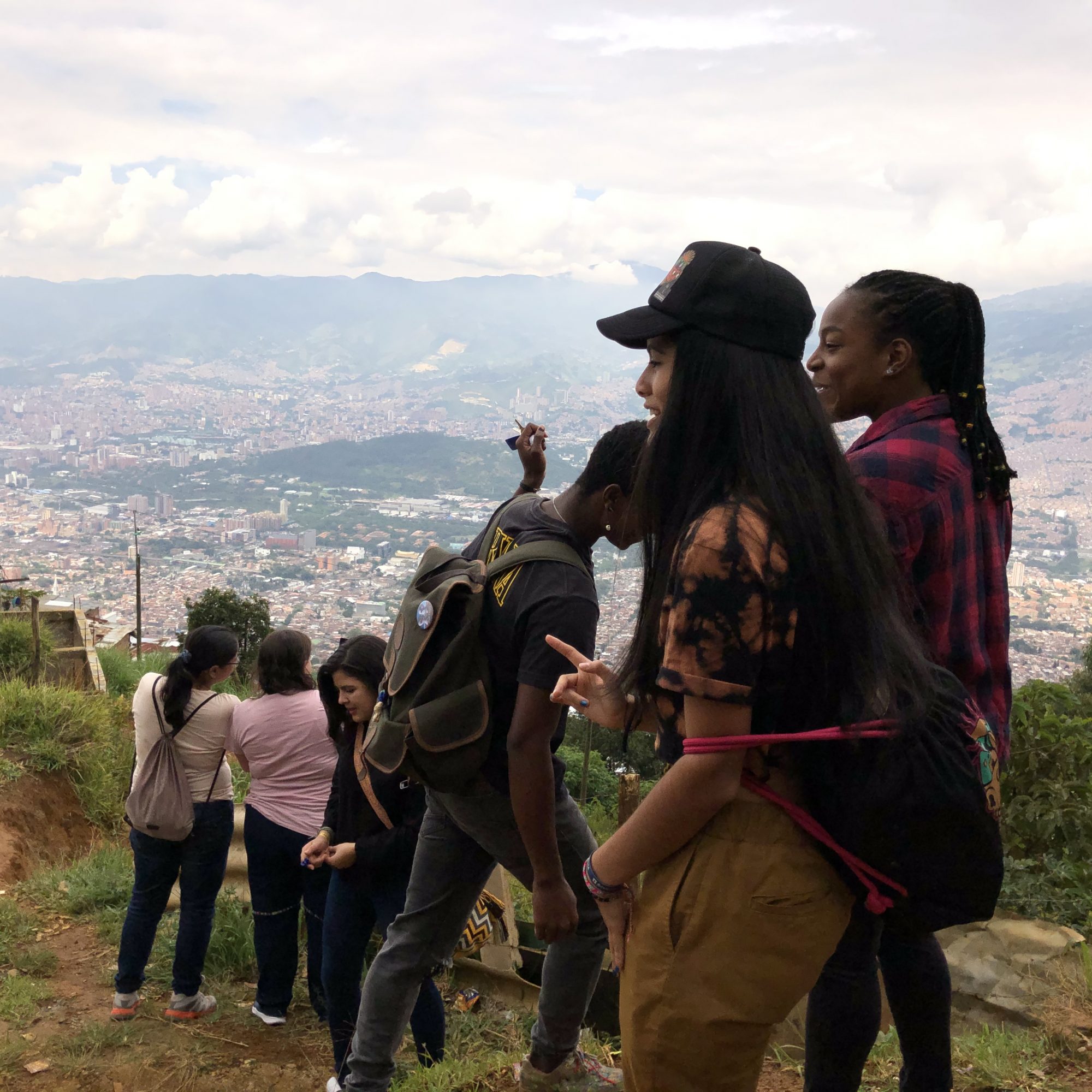Mediation is a resource for conflict management and may improve the relationships between gangs and the community, according to research from Carles Feixa & José Sánchez-García
Researching gangs as ‘natural’ mediators TRANSGANG perspectives in conflict and mediation
Marco is a young man of Ecuadorian origin living in Barcelona, where he helped to re-find the group Latin Kings (whose origin dates back to Chicago in the 1960s) as a youth cultural organisation. After his pass for the prison, he set out to learn from his mistakes and teach the “little brothers” to find alternatives to the street; today he has just published his autobiography.

Katia is a young Afro-descendant woman from a region of the Colombian Pacific, who moved with her family fleeing the armed conflict that ravaged the country, settling in a marginal commune in Medellín. She witnessed several deaths in her neighbourhood caused by the “combos” (drug trafficking gangs) and sought the support of her “parche” (the informal group of peers), beginning to collaborate with some NGOs in the processes of mediation and popular education; she currently participates in a citizen journalism workshop.
Abdul is a young man living in Casablanca who has lived close to the violence exerted by the “tcharmiles” (vandal youth groups from the suburbs), and he is often seen as a “hittiste” (the young man who neither studies nor works). Although he has been tempted by jihadism and by emigrating to Europe as a “harraga,” his passion for hip-hop and his jobs in the informal economy have allowed him to find ways to overcome violence and exclusion.
Marco, Katia and Abdul are fictitious names, but they correspond to young people of flesh and bone, who have belonged or belong to youth street groups (the so-called gangs). Currently, they are collaborating with the TRANSGANG project. Here, we show the TRANSGANG mediation perspectives that today, we are investigating in twelve cities of Southern Europe, North Africa and the Americas.
Gang members as natural mediators
“Conflict is key, and crime a possibility, an event, a contingency that, nonetheless, does not saturate the way of life and the ordinary organization of the group” (Queirolo Palmas, 2017, p. 66). Nevertheless, the process of how that conflict is managed is less known: “Mediation is used when enforcement is ineffective, and the consequences of the feud are likely to be seen in spiralling tit-for-tat crimes based on business disputes, petty rivalries or issues over respect.” (Peachey, 2014).
A focus group carried out in Madrid at the end of 2018, showed the informal and intercultural mediator role that gangs perform for their newly arrived members. The gang, through its senior members, may act as a bridge to reduce the culture shock for the members that have just recently arrived at the target society. From words and expressions that are different, to social ways, dealing with administrations or looking for a job, in many cases gang members take the role of “link-workers” for the members who need it. The “hidden curriculum” of members of these transnational gangs includes abilities related to intercultural mediation professionals as empathy and resilience, first-hand knowledge of the origin culture and the migration experience.
Gangs as natural mediators appear here, although it is possible that these agents do not know that what is being performed is a mediation process. But when internal conflicts are solved without the need for drastic solutions, we can infer that the opposing factions have been able to reach an agreement. A respected member of the group or community usually has the role of a socially established mediator: this leadership helps prevent major conflicts most of the time. This is why it is not unusual for the authorities to try to establish relationships with group leaders to gain access to the gang and to avoid larger consequences. In fact, experience tells us that when these groups are left without leadership due to persecution or imprisonment, far from disappearing or maintaining a low profile, the chaos caused by the most rebellious members can be amplified due to the lack of internal control.
Gangs and the community
On other occasions, gangs want to pacify/formalise their relationship with local/national administrations, and they need, in turn, a valid mediator: they have become a party. Regarding experiences of success and failure with gangs and mediation, both the relationships and the results of mediation processes will depend greatly on the socio-cultural and political contexts of the settings in which the mediation takes place (Feixa, Sánchez-García et al., 2019, 2020).
It is common for youth street groups to relate to each other beyond conflict and competitiveness, both among members and between two groups. Common backgrounds, shared public spaces and similar life experiences and expectations tend to bridge the gap. It is usual to find that either temporarily or in the long-term, gangs can reach agreements to work together in the pursuit of social benefits for their communities. Young people in gangs, like young people, in general, have future expectations, either positive or negative. When social conditions do not present them with attractive or at least viable ways of socio-economic progress, however, many members can get disappointed both with the process and with the system.
Closing remarks on mediation
We can conclude that mediation as a resource for conflict management is an interesting tool with possibilities for improving the relationships between the gang and its immediate context, with other gangs, with authorities and even within the gang. Moreover, it is important not to underestimate the ability of members of the youth street groups, who may have to act as mediators to benefit not only their community, but society as a whole. Too often in the past, local and national administrations have forgotten this, and the role of a mediator has been filled by an expert in the field who belonged only to the receiving community. This is the reason why the researchers of the TRANSGANG project entered the field.
References
Feixa, C. (Dir.), Sánchez-García, J. (Coord.), Ballesté, E., Cano-Hila, A. B., Masanet, M.-J., Mecca, M., & Oliver, M. (2019). The (Trans) Gang: Notes and Queries on Youth Street Group Research. Barcelona: Universitat Pompeu Fabra & European Research Council. http://dx.doi.org/10.31009/transgang.2019.wp02.1.
Feixa, C., Sánchez-García, J., & Brisley, A. (2020). Gangs, Methodology, and Ethical Protocols: Ethnographic challenges in researching youth street groups. Journal of Applied Youth Studies, 3(1), 5-21. https://doi.org/10.1007/s43151-020-00009-1.
Queirolo Palmas, L. (2017). ¿Cómo se construye un enemigo público? Las ‘bandas latinas’. Madrid: Traficantes de Sueños.
Peachey, P. (2014, October). Send in the peacemakers: an answer to gang violence? Independent. London. Retrieved from https://www.independent.co.uk/news/uk/crime/send-in-the-peacemakers-an-answer-to-gang-violence-9773832.html

This project has received funding from the European Union’s HORIZON 2020 Research programme under the Grant Agreement no. 742705.
*Please note: This is a commercial profile
© 2019. This work is licensed under CC-BY-NC-ND.











